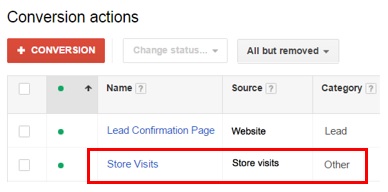In 2018, Google Adwords underwent a rebrand and became Google Ads. It’s still one of the best paid media channels for reaching audiences.
In this article, we’ll help you to understand what goes into a successful Google Ad campaign. We’ll also talk about related platforms like Google Analytics.
By the end of this article, you’ll know how to increase your ROI on Adwords using 4 revolutionary tactics.
But first, here’s a quick intro to Google Ads to get you warmed up…
Contents
What Is Google Ads?
Google Ads is a paid advertising channel like Facebook and Bing.
It’s also known as pay-per-click (PPC) advertising, because advertisers pay a fee every time a customer clicks on their ad.
Whenever you type a search query into Google, you’ll see Google Ads pop up above what’s called the “organic” search results.

Because the ads are triggered by specific search terms, Google Ads is a great strategy for reaching qualified leads. That means the leads are already interested in the topic and the ad is relevant to them.
Compare this to say, a billboard which displays to everyone regardless of whether they’re interested or “qualified”.
What is Google Ads Used For?
Because Google Ads is so easy to use and can be cost-effective, it’s accessible to businesses both large and small. It can also serve multiple purposes, including but not limited to:
Increase website traffic

While not recommended as an exclusive SEO strategy, Google Ads can be used in combination with other methods to gain website visits and boost organic ranking on Google.
For example, if your website is new, you can use Google Ads as part of an overall strategy to kickstart website visits. Gaining website visits, even if paid, positively affects SEO.
Increase brand awareness
Google Ads offers you a way to get your brand in front of audiences searching for a general term, or even searching for your competitors.
Some businesses use competitor’s branded keywords in their own ads to “steal” that ad space and get in front of competitor’s audiences.
Read more in How to Outrank Your Competitors on Google in 2020.
Generate leads
Google Ads can generate leads through digital channels, such as website visits that capture email addresses.
But Google Ads can also help you receive more phone calls to your business or more in-store visits.
Google Ads even has a ‘shop/store visit conversion tracking’ feature, which can give you an idea of how location-based clicks turned into in-store visits.

Track results
One of the most important steps in marketing is tracking results. Google Ads has its own tracking features which enable you to measure and improve your ad campaigns.
Not only can you view your cost-per-click, you can also weigh up your cost-per-impressions (CPM), i.e. how much you paid to get your ad in front of someone’s eyeball.
Importantly, Google Ads integrates with other tracking software including Google Analytics and customer relationship managers (CRMs) like Salesforce.
Tracking results with a CRM lets you see how effective your Google Ads are in the context of your broader digital marketing strategy, where you use other paid media and marketing channels. Read more in Connecting Your Customer Journey: Salesforce CRM & Paid Media.
Google Ads and Google Analytics

Speaking of tracking results, let’s talk a bit about Google Analytics.
As the name suggests, Google Analytics is a tool for measuring your website’s performance. It uses data from all Google channels, including Google Ads, Search Console and Data Studio.
The advantage of using Google Analytics is that you can track a specific user’s behaviour on your site after they clicked your ad. See which pages they went to, whether they put items in their cart or abandoned their cart or made a purchase, whether they bounced etc.
Is Google Analytics for me?
If you’re using multiple Google tools, then Google Analytics could be useful for you.
Small to medium sized businesses tend to need only the free version, whereas large businesses find the paid version, Analytics 360, better suits their needs.
Google Ads’ Possibilities

The most commonly known and recognised Google Ads are the pay-per-click ads that pop up directly under your search query ahead of the organic results…
…but Google Ads has many more capabilities to create exciting and relevant ads
Mobile vs Desktop
You can create google Ads for both mobile and desktop– an important distinction in the mobile-first era. These ads are responsive and display optimally for mobile or desktop.
Other channels
Google Ads includes advertising on YouTube, Blogger (Google’s blog platform), and Google Display Network (ads appearing on websites).
Pay-per-conversion
Instead of pay-per-click, Google Ads also allows you a different payment structure called pay-per-conversion.
This is where you pay only when a user turns into a paying lead. It’s more expensive than pay-per-click but can be worth your money in some cases.
4 Tactics to Revolutionise Your Ad Campaigns
Now that you’ve got a handle on the basics, here’s how to increase your ROI on Adwords.
With these 4 revolutionary tactics, you’ll know how to improve your Adwords campaign for excellent results.
1. Be Specific

What can happen if your keywords are too general or vague?
Your ads will be shown to audiences who think “Oh, this might be relevant to me” and click on the ad. When they get to your site, they realise the ad wasn’t relevant at all and they click away or “bounce.”
You’ll be charged for the click and you’ll gain nothing from the transaction.
Don’t use keywords that are too broad, general or vague. Try to be as specific as possible.
This means targeting long-tail keywords, aka, phrases with 4 or more words. Often, long tail keywords include locations.
BTW: The best way to be more specific is to really know your audience with a customer avatar.
It’s not always easy to determine which keywords are too general and which will work. That’s why you need to factor a “testing” period into your budget.
You’ll need to test your keywords, observe the results, and tweak as you go to improve your return-on-investment (ROI).
2. Be Relevant

By using specific and long tail keywords, you’re automatically going to be more relevant to your audience and improve your ad spend ROI. However, you also need to pay attention to audience intent.
Your keywords may match the keywords that people are searching for, but they may not be relevant to the intent behind it.
For example, if you target a “how to lift weights” keyword and take people to a landing page with a product catalogue of weights, you’re targeting people looking for information, not people looking to make a purchase.
This is where Google Responsive Search Ads comes in handy.
You can enter multiple versions of your copy and over time, Google will test them and determine the most effective combinations.
3. Improve Your Quality Score

You’ve probably noticed that Google ranks ads and not just organic search results. Google does this by giving your keywords a “quality score.”
The higher your quality score, the better you will rank.
Your quality score is determined by three factors:
- Relevance of your keyword
- Quality of headline and body copy
- User experience of your landing page
That brings us to the next revolutionary tactic.
4. Spruce Up Your Landing Page

Don’t get caught up in keywords and neglect your landing page. Unless your landing page is excellent, all of your efforts to get clicks go by the wayside because users may bounce off the site.
Give your landing page some love by improving the following features:
● Mobile responsiveness
If your landing page isn’t mobile responsive, users will almost always click away. Use Google’s mobile friendly test to be sure!
● Headlines
Make sure your headline grabs the audience and assures them the page is relevant to their needs. Test your headlines using CoSchedule’s Headline Analyser.
● Body copy
Copy should be concise and easy to read. Avoid run-on sentences, use subheadings and paragraphs. Test your readability using Readability Formulas.
Split Testing your Landing Page

The best way to improve your landing page is by split testing, also known as A/B testing.
This is where you test two different landing pages to see which one works better. Once you establish which one works best, you create a new variant and test again. Each time you test, your website gets better and better.
***Bonus Tip***
The key to split testing is to have two almost identical landing pages with only one variable. For example, have different headlines but keep everything else like design and body copy the same.
If you have more than one variable of difference, you won’t know why one landing page is performing better than the other. Then you won’t know which variables to continue testing and improving.
How to improve your Google Ad campaign
In this article, we’ve shown you how being specific to your audience intent will improve your Google Ads quality score and increase your influx of qualified leads.
We’ve also demonstrated the importance of a successful landing page–one that is well-built and has relevant, easy-to-read copy.
With these 4 tactics, you’ll revolutionise your Google Ads campaign, get more bang for your buck and increase your ROI.
Want more marketing strategies, advice and tips? Check out one of our most popular ever articles:
- Facebook Page Likes: How to Get 1000s for Free
- Social Media Image Sizes 2020
- Priming in Marketing: Advertising Psychology 101
- Instagram Post Reach: 9 Tactics To Reach New Audiences on Instagram
- Social Media Posting Times: The Best (and Worst) Times to Post on The Big Social Networks
- About the Author...





